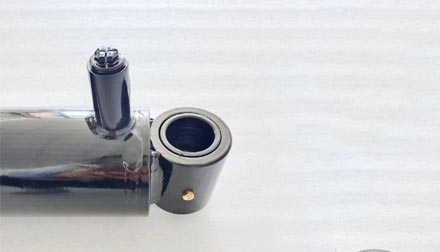Sep . 29, 2024 04:08 Back to list
Single Acting Hydraulic Power Unit Design and Applications for Efficient Energy Management
Understanding Single Acting Power Units
In the realm of mechanical engineering and automation, power units play a critical role in converting energy into mechanical work. Among these, single acting power units stand out for their operational simplicity and versatility. This article delves into the structure, operation, advantages, and applications of single acting power units.
A single acting power unit operates on a one-way motion principle, utilizing hydraulic or pneumatic forces to create mechanical movement. Unlike double acting power units, which use pressure on both sides of a cylinder to enable movement in both directions, single acting units work by applying force in one direction only. The return stroke, instead of being powered, relies on the weight of the load or a spring mechanism. This design inherently simplifies the construction, leading to cost-effective and lightweight solutions suitable for various applications.
single acting power unit

The key components of a single acting power unit include a cylinder, piston, inlet valve, outlet valve, and a reservoir. The fluid (either hydraulic oil or air) enters the cylinder through the inlet valve, pushing the piston to perform work—like lifting, pushing, or pressing an object. Once the work is done, the outlet valve opens, allowing the fluid to escape, and the piston returns to its original position, ready for another cycle.
One of the most significant advantages of single acting power units is their energy efficiency. Since the return stroke does not require additional energy input, they consume less power, thereby reducing operational costs. Furthermore, their simpler design translates to lower maintenance requirements, making them suitable for continuous operation in various industries. Single acting power units find applications across diverse sectors, including construction, manufacturing, and automotive industries. For instance, they are commonly used in machinery such as jacks, presses, and clamps. In the construction sector, these power units are valuable for lifting heavy materials and driving piles into the ground. Additionally, in the manufacturing world, they play a crucial role in automating processes, enhancing production efficiency, and ensuring precision in tasks that require consistent force application.
In conclusion, single acting power units are integral to numerous industrial applications due to their simplicity, efficiency, and cost-effectiveness. As technology evolves, the applications of these power units continue to expand, providing innovative solutions that enhance productivity and performance across various engineering fields. Their role in modern machinery and automation cannot be overstated, as they embody the principles of efficiency and effectiveness in mechanical design. As industries strive for greater innovation and productivity, single acting power units will remain a fundamental component in driving advancements and achieving operational excellence.
-
1.5 Ton Lifting Cylinder-Hebei Shenghan Hydraulic|Heavy-Duty Lifting,Custom Hydraulic Solutions
NewsJul.30,2025
-
1.5 Ton Lifting Cylinder 70/82-40-290-535-Hebei Shenghan|Precision Engineering&Industrial Lifting Solutions
NewsJul.30,2025
-
1.5 Ton Lifting Cylinder 70/82-40-290-535 - Hebei Shenghan | High-Strength Hydraulic Components
NewsJul.30,2025
-
1.5 Ton Lifting Cylinder 70/82-40-290-535 - Hebei Shenghan | Hydraulic Solutions, Customization, Precision Engineering
NewsJul.30,2025
-
1.5 Ton Lifting Cylinder 70/82-40-290-535-Hebei Shenghan Hydraulic Machinery Co., Ltd.|Heavy-Duty Hydraulic Cylinder&Customization Options
NewsJul.30,2025
-
1.5 Ton Lifting Cylinder 70/82-40-290-535 - Hebei Shenghan Hydraulic Machinery Co., Ltd.
NewsJul.30,2025
